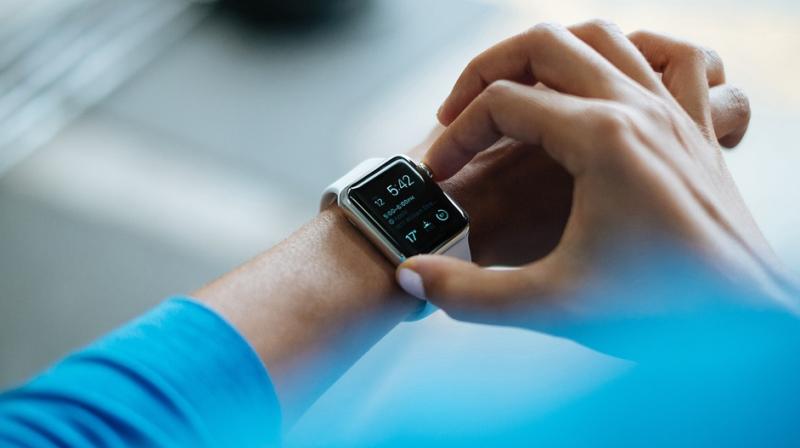Wearable activity trackers to hop on IoT in future
Almost any device, if connected to internet, can provide data on-demand.

Remember the last time your body was giving away the signs of an upcoming illness? We all can relate to an instance in our lives when we feel exhausted, perhaps a bit feverish — and the morning after we call-in sick. These are rather subjective triggers of our conscious intuition. Futuristic wearable activity trackers are betting heavily on giving you objective sign of potential illness. Based on these objective signs, another layer of smart-programming might automatically initiate a doctor’s appointment for preventive medication and habitual change.
For a ‘smart’ activity tracker to make predictive health decisions, its several building blocks need to be perfected. Internet provides on-demand information from a pool of vast knowledge from the entire world. To put it crudely, this network consists primarily of us humans and a web server machine. In order to access information we should first know what to search. These forms the first block of a ‘smart’ activity tracker: the correlation of activity tracker data with potential illnesses. Now-a-days, the networks consist of an extra player — ‘things’. These ‘things’ measure certain properties and transfer measurements to another device. Internet of things (IoT) comprises of us humans, web servers, and ‘things’. The next building block is the ‘thing’ in IoT: activity tracking sensor.
IoT is a rather broad term covering any physical device/thing that is connected to the internet. The device might not necessarily be publicly accessible via internet. Consumer devices such as refrigerators, televisions, washing machines, media streamers, smart watches, home automation amongst others fall under the category of internet of things. Almost any device, if connected to internet, can provide data on-demand. What one chooses to do after collecting the data determines worthiness of a smart-product.
Now that you have data, what's next? It can be presented as it is — take the example of a vehicle GPS tracker with internet access, which allows you to track location of your vehicle in real time. In another case, the data can be processed further to enhance its worth — take an example of smart fridge with bar code reader, which allows keeping track of expired or empty food supplies. Rationally, spending money on a smart device should be justified on whether the quality of data is important for you.
Today’s wearable activity trackers have created a lot of buzz — thanks to the clever marketing. Most of these gadgets allow a user to track metrics like heart rate, number of steps taken, steps climbed, and sleep quality. The aim of the activity trackers revolves around health and wellness targets. For instance, one of the features of Fitbit’s products focuses on tracking exercise goals. This goal could be as simple as walking for two kilometres every day converted into steps. These steps aggregate over total daily movement from walking around your home to intentionally going out for walks. Creating awareness about lack of walking might motivate one to schedule intentional walking and jogging.
So why should we care about a fitness goal? Because it most certainly improve daily physical and mental well-being. World Health Organization recommends at least 150 minutes of moderate-intensity aerobic physical activity in a week to improve cardio-respiratory and muscular fitness, bone health, and reduce the risk of chronic diseases, and depression. However, doing enough physical activity alone will not guarantee prevention of future illness. This is where the smart wearable activity trackers jump in. They are all set to play a major role in possibly preventing future illness.
The current state of health care is largely ‘reactive’. Reactive health care relates to an approach wherein you seek treatment after you have experienced symptoms of an illness. For instance, when you suffer from fever, and then you seek medical treatment. IoT and activity trackers present a potential for a ‘preventive’ health care. The future of smart activity trackers lie in using physical metrics like, but not limited to, heart rate and blood pressure, to predict illness in near future.
As of now predictive and preventive health care is limited to the expertise of medical doctors. Essentially, we monitor changes in lifestyle and number crunch data into pretty statistics showing patterns. For instance, your activity tracker might report that you got 20 per cent less sleep every day over the past month. You could use then this information to reflect on your past month and identify why you get less sleep. You might even consider sharing this information with your doctor for expert prognosis.
Next time you plan on getting an activity tracker, understand that you can always get more out of it than what the built-in functions allow you to. Look for patterns and share any concerning patterns with your doctor. In future, these devices might contact your doctor directly before you even know it.
Disclaimer: The views and opinions expressed in this article is solely those of the original author. These views and opinions do not necessarily represent those of Deccan Chronicle and/or other staff and contributors to this site. Durgesh is a wannabe scientist completing his PhD at Delft University. You can reach him by sending an email to durgeshkawale@gmail.com

